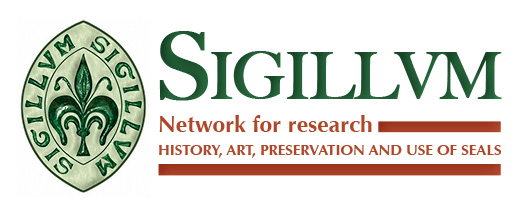Collecting
Collecting Seals
(John Cherry, London et al.)
Seals, seals impressions, casts, matrices and electrotypes from matrices may be found in a number of places. Generally, Archives contain documents with seals both attached and unattached to documents. Sometimes they also contain impressions. Museums often contain seal matrices, but sometimes contain seals, often detached from documents. It is worth remembering that some institutions such as educational colleges and towns often contain their original seal matrices. Private collections of seal and seals matrices have been created from the late seventeenth century and the collecting of seals and matrices was particularly popular in the nineteenth century.
Private Collecting
(John Rassweiler, Princeton)
Private collecting of seal matrices and impressions is one the nucleuses of modern employment with seals. Antiquarians and collectors with Antiquarian interest arranged first collections since the 16th century, showing particular interest in the matrices rather than the concrete impressions. Only from the 18th century onwards public collections such as archives and museums began to grow. In many cases their origins lay in bequests of ‘private’ collections. Although many matrices and seal impressions went from private to public hands in the 19th and 20th centuries, a remarkable number of private collections exist at the beginning of the 21st century all over the world.
One of SIGILLVM’s main goals is to address these private collectors as an important part of the sigillographic community. Their connoisseurship and the objects they hold in their collections are of outstanding importance for a broader understanding of the culture of pre-modern seals and sealing practices. We intend to encourage these collectors to contribute their expertise to a much broader community, reaching from researchers to teachers, from conservators to curators.
If you want to read more about a private collector’s experience, see below.
Museums
Museums across Europe have collections of seal matrices from many different cultures, and although some institutions hold documents with seal impressions attached, these are normally held in larger numbers in national or local archives. During the nineteenth and early twentieth centuries, creating copies from seal impressions and seal matrices was practised by individuals whose private collections of seal matrices were later acquired by museums. These casts were often made from plaster, sulphur or gutta percha (a natural latex from the bark or leaves of the Palaquium gutta from Malaysia). Metal casts were also produced by electrotyping (a process in which a mould is placed in an electrolytic solution and plated with copper by an electrical current). Major institutions such as the Archives Nationales in Paris still create casts from their wax impressions.
As well as inheriting seal matrices and casts from private collectors, museums and national or local archaeology services also acquire new finds from excavations or from metal detectorists. For example, in England and Wales the Portable Antiquities Scheme (PAS) records antiquities found in these areas. Some of these are seals. The database contains 430,254 records of 682,996 artefacts. Seal matrix returns 2,911 results.
Museum curators and archaeologists are interested in seal matrices as examples of metalwork from different periods. The most common type is a simple lead die, often with an individual’s name, and for more sophisticated designs a copper-alloy die is usual. The material from which a matrix is made, the intricacy of the imagery and text, and the type of subject matter all provide information about its original owner. The number of seal matrices reported each year, and those held in collections already, have contributed to a better understanding of seal ownership across Europe, particularly during the Middle Ages.
SIGILLVM supports museum professionals in their work with seal matrices, impressions and casts, and will help to bring them into contact with others interested in these objects.
